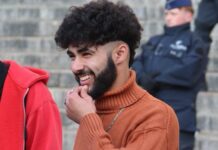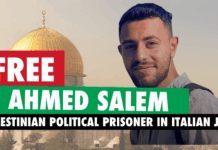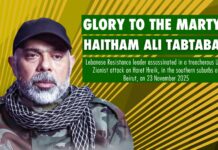
9 August marks the second anniversary of the martyrdom of the Lion of Nablus, the ghost of the mountain of fire, Ibrahim al-Nabulsi, and his fellow fighters, martyrs and prisoners of the Lions’ Den.
Two years after his martyrdom, Nabulsi and his comrades remain symbols of courage, resistance, pride and combativeness for an entire generation of Palestinians but also for all supporters of the Palestinian resistance throughout the world.
Nablus: From the Mountain of Fire to the Lions’ Den
Since the period of the British Mandate, Nablus has played a central role in Palestinian political life, and therefore in the resistance of the Palestinian people.
It was in Nablus that the great strike of 1936 was declared. By 1936, Palestine had been under the British colonial mandate for 20 years. In 1917, the Balfour Declaration promised that the British Empire would support the creation of a “national home for the Jewish people” in Mandatory Palestine. In a few years, aided by a British colonial policy of land grabbing and confiscation, expulsion and a discriminatory and racist tax policy, the Zionist colonial project developed rapidly in Palestine. On the side of the indigenous Palestinian people, who suffered the full brunt of this colonial policy, anger was growing.
On 19 April 1936, in a family-run soap factory in Nablus, the newly founded Arab National Committee declared a major general strike. It called on Palestinians to withhold tax payments and boycott Zionist settler products in protest against British colonialism and increasing Zionist immigration. Within days, national committees were formed in all major cities and some large villages to strengthen the strike. Under pressure from the rank and file, which seized upon the movement with force, the five largest Palestinian political parties created the Arab Higher Committee and took charge of the strike.
The strike grew and blossomed throughout Palestine, and in other countries in the region support movements were organized. A real popular movement was being built and in the countryside peasants took up arms to fight the colonial troops, with Syrian sheikh Izzedine al-Qassam playing a leading role in mobilizing the peasantry for armed struggle. A few months later, in October 1936, faced with diplomatic pressure, the Arab Higher Committee decided to end the strike.
This general strike is a central event in the history of Palestinian resistance. It will serve as an impetus for another major event in the history of Palestine: the Great Arab Revolt of 1936-1939. The fellahin – the peasants – who played a central role in the 1936 strike and constituted at that time the heart of the Palestinian armed resistance, targeted Zionist and British interests. In response, more than 25,000 British soldiers were sent to Palestine to crush the rebellion. The colonial empire also provided weapons to the Zionist militias that were formed and served as auxiliaries to the colonial army. After a bloody repression, the Great Revolt gradually stopped, when the British Empire promised to significantly reduce Zionist immigration. It is estimated that in three years, 5,000 Palestinians were killed, 15,000 to 20,000 injured and 5,600 imprisoned, or a total of 10% of the population.
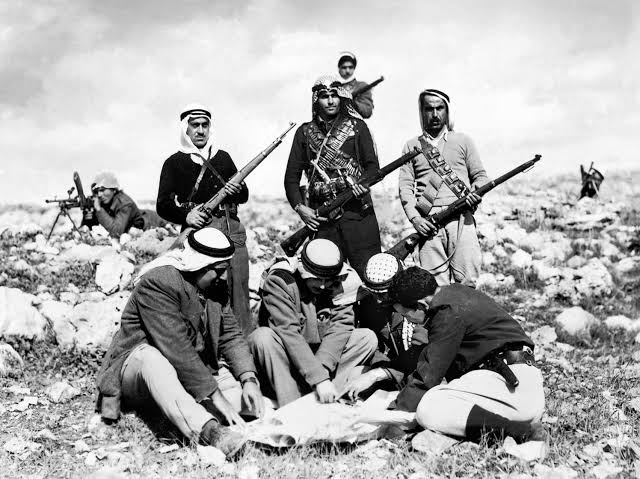
During the years following the Nakba and the establishment of the Zionist entity on the land of Palestine, Nablus remained a stronghold of the resistance. In 1967, with the defeat of the Arab armies and the occupation of the West Bank and Gaza, the old city became a stronghold of the resistance and hosted cells of organized fighters. Significant armed actions were carried out and a number of them had a strong impact on the Zionist army. Shadia Abu Ghazaleh was one of these fighters. A member of the Popular Front for the Liberation of Palestine, she led a network of urban resistance fighters in the city of Nablus at the time. Shadia considered education, knowledge and science as weapons in the struggle for liberation, and had participated in cutting-edge operations that inflicted significant losses on the colonial army. She fell a martyr in 1968, while preparing a bomb at her home, in a district of the old city. In tribute, Leila Khaled later took up her name as a nom de guerre during her external resistance operations. Several schools bear her name in the West Bank and Gaza — and both Zionist forces and European funders have repeatedly attempted to force Palestinians to remove her name, like those of other martyrs of the liberation movement.
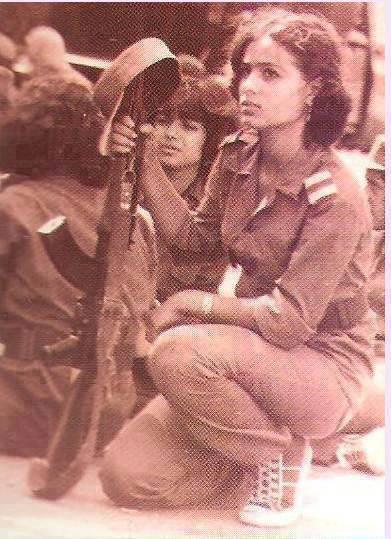
From the beginning of the 1980s, a new generation of resistance fighters decided to rebuild Palestinian organizations and factions in the city and surrounding camps. This revitalization of resistance in the city and its outskirts would allow young people to physically and concretely oppose the Zionist army. And a few years before the first intifada, in Nablus and in the Balata camp, stones and Molotov cocktails were already raining down on the colonial soldiers. In 1987, when the uprising started in Jabalia camp in Gaza and spread throughout Palestine to break out in the West Bank, the city and its outskirts became a stronghold of clashes.
During the 2nd Intifada, the city was once again a center of resistance. Among its most ardent defenders, names recur like Nayef Abu Sharkh, Jaafar Al-Masri and Fadi Al-Bahti, and the two fighters of the Abu Ali Mustafa Brigades, Yamen Faraj (Abu Nasreen) and his comrade Amjad Mlaitat. Pursued and hunted for years, they carried out a significant number of operations, before being assassinated on 6 July 2004, after a four-hour confrontation against Zionist soldiers.
Historically, the city of Nablus has been a stronghold of Palestinian resistance. The history of martyred fighters and prisoners is passed down from generation to generation, can be read on the walls, and through the discussions of parents or elders. Each Palestinian city has its history of resistance, and this history constitutes the foundations of the future of the revolution, whether it is the story of the battle of the Jenin camp during the second intifada or that of a prisoner fighter from a small village. Experiences complement each other, experiences respond to each other, the failures and successes of the elders are evaluated and liberation draws closer.

IBRAHIM NABULSI: THE LION OF NABLUS
Ibrahim Al Nabulsi is a child of Nablus. He was born there in 2003, during the Al-Aqsa Intifada. At that time, it was a city ravaged by raids and attacks by the Zionist occupation army. It painfully counts its inhabitants who fell as martyrs to defend the city, and notes the material damage left by tanks, bombs, bulldozers and other colonial soldiers.
At the age of 15, wanted by the Zionist state, he was arrested with two childhood friends, Muhammad Dakhil and Adham Mabrouka, by the Palestinian Authority. In detention, they suffered physical violence that would deeply mark them and develop their commitment to the resistance. Upon their release, they joined the Al Aqsa Martyrs Brigades in the city of Nablus. The group would join a larger coalition, the Nablus Brigade, a unified brigade that brought together fighters from various factions present in the city and its outskirts.
Very quickly, the group became a priority for the occupying forces. Operation “Break the Wave” was launched on the city at the beginning of 2022 to eliminate the brigade. A campaign of raids, murders and bloody executions then began. Because these resistance fighters, sons, fathers, cousins and children of Nablus benefit from unwavering support from the population, a popular support that makes the colonial army tremble.
On February 8, 2022, the occupation forces, infiltrating the city of Nablus, ambushed a car carrying Ashraf Mubasalat, Mohammad Dakhil and Adham Mabrouka. A hail of several dozen bullets fell on the group of friends who died instantly. These three young men were resistance fighters, members of the Nablus Brigades. But above all, they were Ibrahim’s childhood friends, who were with him during his incarceration. After the murder of his three companions, Ibrahim learned that he too was actively sought by the occupation forces and that he had just narrowly escaped assassination.
After the murder of his three friends, Ibrahim became one of the main targets of the colonial army, which then launched a relentless hunt for the Lion of Nablus and his comrades. Despite everything, as usual and as he would do until his martyrdom, it was not uncommon to see him walking around the old city, taking the time to greet people and talk to them.
On the day of the funeral procession of his three friends, while he was actively sought, he broke through the crowd to salute his brothers in arms one last time. This public appearance, like a challenge to the colonial war machine and its secret services, further forged his legend.
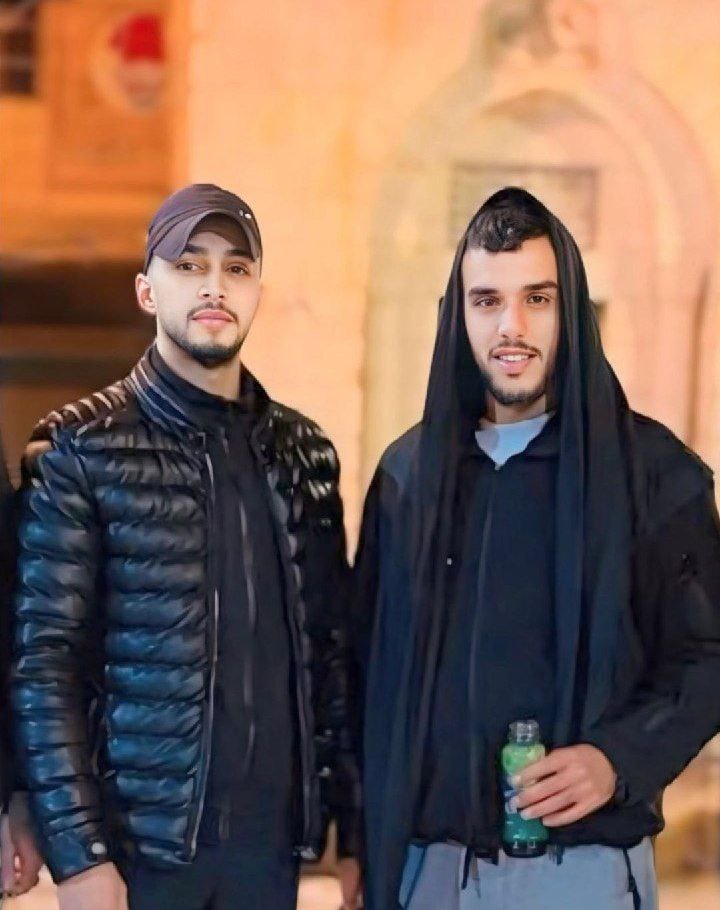
At dawn on 24 July 2022, residents of the Al Yasmina neighborhood were awakened by intense gunfire. The colonial army had launched an operation against a house in the city that was said to be sheltering resistance fighters. For more than 5 hours, Zionist soldiers riddled the house with bullets and explosives. The resistance fighters held their own, aided by their network of tunnels running throughout the city. Despite everything, the occupying forces had the upper hand, and two prominent fighters from Nablus, considered the founders of the future “Lions’ Den,” fell as martyrs: Muhammad al-Azizi and Abdul Rahman Subuh. Ibrahim, who was present at the scene, managed to escape once again. His public appearance during the funeral procession had the effect of a thunderclap. Surrounded by his people, rifle in hand, he pierced the crowd to carry the shrouds of his friends.
On Tuesday, 9 August 2022, in the early morning, the Israeli army launched a new raid on Nablus. Clashes broke out with residents and several dozen of them were injured. At the same time, the occupation forces surrounded a block of houses in the old city. Inside were Ibrahim Nabulsi and a comrade, Islam Subuh. The two fighters refused to surrender, and chose to resist. The colonial army unleashed itself on the house, riddling it with bullets and finally destroying it with a missile launcher. The walls exploded under the violence of the shock. Despite their courageous resistance, the two brothers in arms fell as martyrs under the colonial bullets.
On the same day, 16-year-old Hussein Jamal Taha was shot in the heart by Israeli soldiers during clashes that broke out in the city.
“I love you so much. If I am martyred, guys: I love my mother. Take care of the homeland after I am gone, and my last wish for you, on your honor: do not drop the rifle – on your honor. I am surrounded and I am going to my martyrdom. Pray for me.”
These are Ibrahim’s last words, from a voice recording sent while he was surrounded by occupation soldiers. These words, “don’t drop the gun,” will resonate strongly with all Palestinian youth, in historic Palestine and in the diaspora.
The city was filled with people, with a dense and electric crowd accompanying the remains of the martyrs during the funeral procession. The mother of his comrade who fell martyr before him, Muhammad Al Dakhil, washes his face while addressing his last words to him. In the hubbub, his body is carried for a time off the stretcher. Ibrahim’s mother, splits the crowd and carries the shroud with her son’s companions. She pierces the crowd that clusters around the bodies of the resistance fighters, who sacrificed what was most dear to them for their collective liberation. Then Um Eyad, the mother of the Lion, seizes the weapon that her son was carrying.
Ibrahim Nabulsi was long considered a fighter of the Al Aqsa Martyrs Brigades. Following his martyrdom, the Saraya Al Quds Brigades published a statement and a video from him, announcing that Ibrahim was also one of their leaders. He also had bonds of comradeship and alliance with the Izzedine Al-Qassam Brigades. In truth, Ibrahim Al Nabulsi and his companions were fighters of the Resistance. The creation of the Nablus Brigade, an informal alliance across political lines, is the most concrete expression of this. Previous generations have struggled to overcome intra-Palestinian divisions, and the project of the Abu Ali Mustafa Brigades during the second intifada in Jenin, to see the different brigades of the resistance unified under a collective command, was eventually realized in Gaza under the impetus, leadership and direction of Yahya Sinwar, Mohammed Deif and Hamas and the Al-Qassam Brigades. For these young people from the Jenin, Lions’ Den, Tulkarem or Balata brigades, the question of factionalism does not arise. This post-Oslo generation has only known betrayal by the Palestinian Authority, continued colonization, the loss of momentum of the traditional parties, and has been directly confronted with colonial savagery. For them, the only way to defeat the Zionist forces, to be able to defend the camps and liberate their land is to unite the rifles without factional considerations.
Shortly after his death, his comrades announced the creation of a new group in Nablus: “Lions’ Den”. The culmination of this reflection on the unification of the brigades under a common banner, it is a group bringing together young people from different political families, united in the struggle for national liberation. Inside we find leaders and fighters belonging to resistance parties and their brigades, and others who are not affiliated and only active in the Den, all without distinctive signs. The only visible logo is that of the Lions’ Den. A white circle in which two rifles stand guard over Al Quds, placed on a black crescent on which the name of the group is written.
 The Lions’ Den: Prelude to the Flood
The Lions’ Den: Prelude to the Flood
The success of the Lions’ Den lies in an effective formula: an ability to carry out a significant number of operations against Zionist interests and the occupying forces, impactful communication, and above all a limitless sacrifice for national liberation. The number of martyrs of the group is incalculable, all the leaders are either martyrs or in prison (those of the Zionist state but also those of the “Palestinian” authority). The tribute posters follow one another on the walls, and each fallen fighter leaves an immense scar in this landscape of white bricks.
The repression of the Zionist entity was brutal and merciless, it cut off the head of the brigade very quickly, in an ultra-violent manner, seeking to send a message: The person who chooses the path of arms in Nablus will end up riddled with bullets or dynamited. And the significant human toll paid by the Lions’ Den has impacted its military capabilities. The group is less visible and less active. But it has given impetus to other groups which, in turn, hold the occupation forces in check, as in Nour Shams, Jenin, Balata, etc.
The Lions’ Den played a key role in the revival of armed resistance on this scale in the West Bank. The lions of Nablus showed the way forward to Palestinian youth seeking liberation. There was a before and an after. And it impacted the entire Palestinian society, including Gaza, where tributes to the fallen fighters and congratulations for the group’s military actions were sent. After October 7, the Gaza resistance called on the whole of Palestine to stand by its side. The Lions’ Den was the first organization to respond with a statement encouraging all available forces to join the battle.
In short, while the Palestinian armed resistance was in a state of decline, denied even by components of the Palestinian “civil society,” a group of young people from the “mountain of fire” awakened a volcano. And recalled that the path of armed resistance was the path that would allow liberation.
Behind the Lions: The Popular Cradle
In early September 2022, less than a month after the martyrdom of Ibrahim, Islam and Hussein, the Lions’ Den organized its first meeting, for the 40 days of the martyrdom of the founders Muhammad al-Azizi and Abdul Rahman Subuh . For the first time, the fighters of the Den went out in formation and presented themselves to their city. Dressed in black, a white headband with the image of the group, a red cloth tied around the barrel of the rifle to signify that these weapons are only intended to confront the settler, and that no bullet will be wasted by firing it into the sky.
Old Nablus welcomed them in the best possible way, the sons who grew up in its centre. They who know every nook and cranny of the old city, every underground passage, every back shop, every stone scarred by bullet holes, every leaf rocked by the morning breeze. Each time they appear, the streets are crowded, the whole city wants to greet the fighters, the children admire those they imitate during their games, the parents feel the pride of seeing their child be part of these proud resistance fighters.
This is the true strength of the Lions’ Den: it finds its source in every family, in every street. The city is the cradle of the fighters. More than once the population has massively supported the resistance fighters in a difficult situation (as we saw recently in Tulkarem where the population snatched Abu Shujaa, leader of the Tulkarem Brigades, from the clutches of the PA security services) by taking to the streets to face the bullets of the Zionist army.
The group’s flags flutter in the alleys and squares, the faces of the martyrs are enthroned on the walls or cover the walls of shops and street food trailers. Commemorations are regularly organized to keep alive the memory of the fallen fighters so that their struggle finds continuity in previous generations.
The group’s communication has also played a huge role in its success among the population. The official Telegram channel has reached more than 250,000 subscribers. Not to mention all the unofficial channels created to share content about martyrs and fighters.
The simple fact that in hiding, and hunted by the Zionist intelligence services, Ibrahim Nabulsi could walk around the old city and take advantage of that connection with the street, shows to what extent the city and its inhabitants were a protective veil that lovingly closed over the resistance fighters.
Faced with the ongoing genocide, and faced with the full alliance of imperialist powers with the Zionist regime, seeking to grant it total impunity, we must stand with strength and dedication alongside the fighters of the Palestinian Resistance. We can, through our mobilization in the imperial core, open a breach that can significantly weaken the Zionist genocidal regime and strengthen the Resistance! Through economic, sporting, and cultural boycott, by fighting for the release of prisoners of the resistance incarcerated in our countries like Georges Abdallah imprisoned in France for 40 years and eligible for release since 1999, the Holy Land Five detained in the USA for 16 years, or our comrades from Palestine Action! Through our mobilization, let us create an international popular cradle for the Palestinian Resistance and support the Palestinian resisters and fighters!
Glory to the martyrs, long life to the fighters, freedom to the prisoners!
Glory to the Palestinian Resistance!
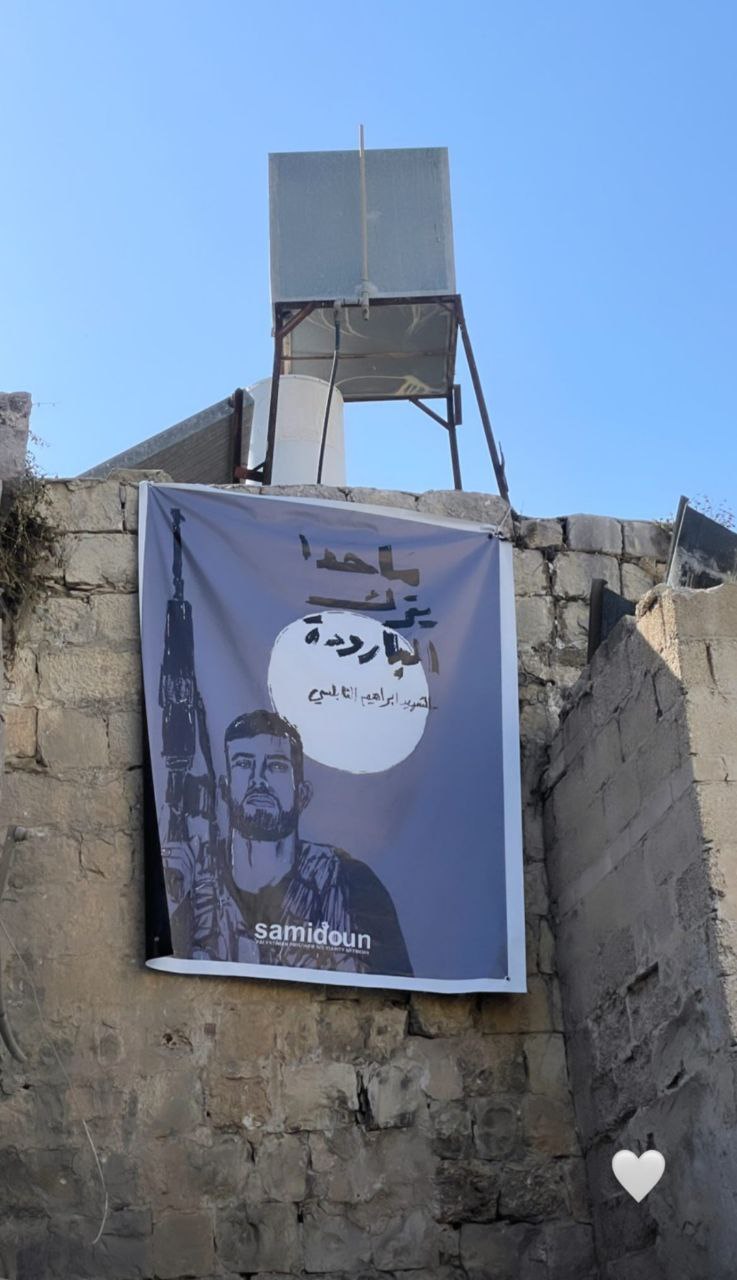
Discover more from Samidoun: Palestinian Prisoner Solidarity Network
Subscribe to get the latest posts sent to your email.



